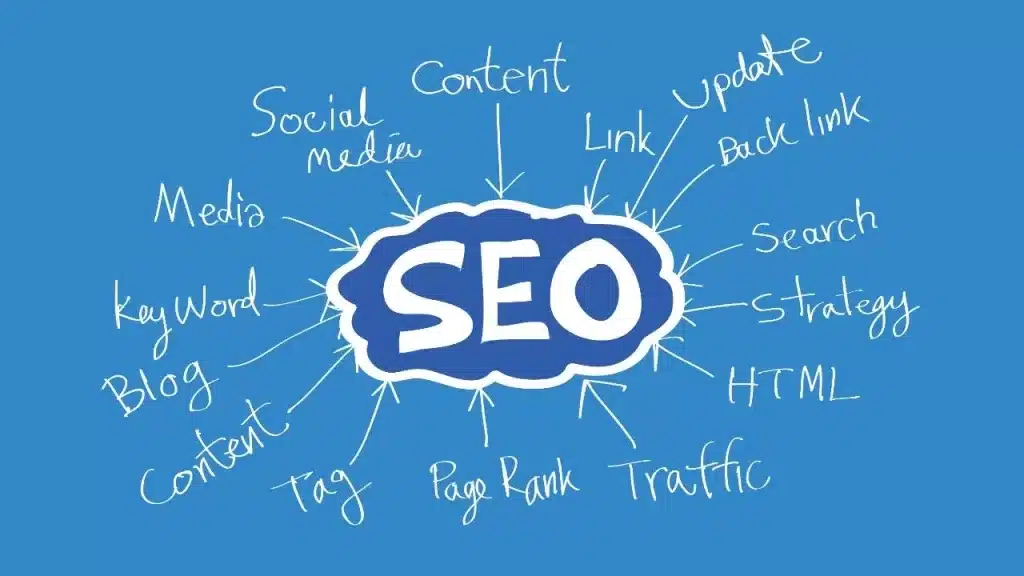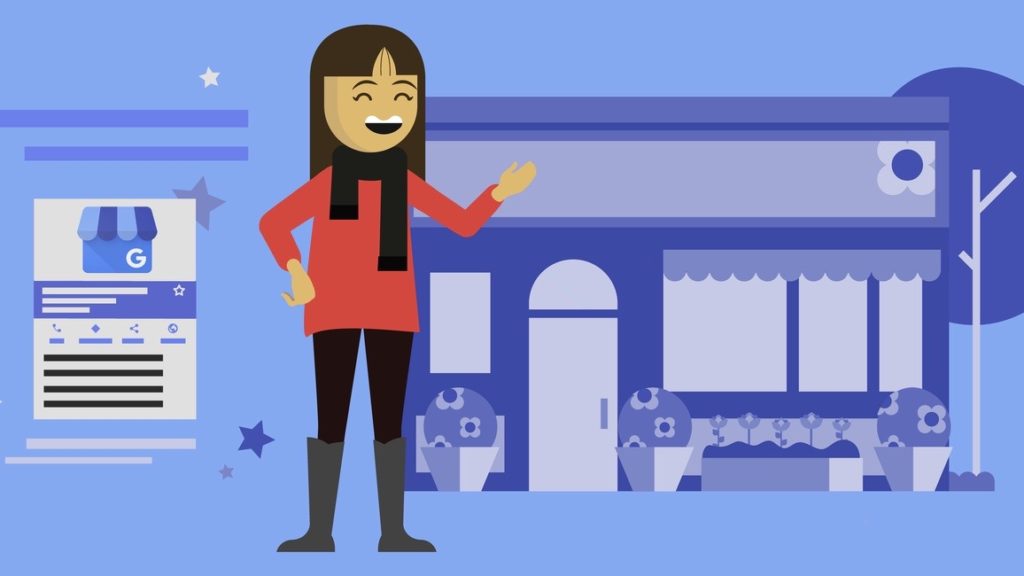
Overtop Media Digital Marketing is a team of experts specializing in SEO and digital marketing solutions for local Charlotte, NC businesses. By leveraging the power of SEO, Overtop Media can help businesses grow their online presence, drive more traffic, and ultimately increase revenue.
Here’s how Overtop Media can help local Charlotte businesses grow with SEO:
- Local SEO Optimization: Our experts understand the importance of local SEO for businesses with a physical presence. We will optimize your Google My Business listing, ensure NAP consistency, and build citations to improve your local search visibility and attract more local customers.
- Keyword Research and Analysis: Our team will conduct thorough keyword research to identify the most relevant and valuable keywords for your business. We will also analyze your competitors’ keyword strategies to uncover untapped opportunities for growth.
- On-Page Optimization: We will optimize your website’s content, meta tags, headings, and URLs to ensure search engines can easily understand and index your site. Our team will also incorporate relevant keywords and LSI keywords to improve your content’s relevance and search performance.
- Technical SEO Audit: Our experts will perform a comprehensive technical SEO audit of your website to identify and fix any issues that may be hindering search engine crawling and indexing. This includes addressing issues related to site speed, mobile-friendliness, broken links, and canonical tags.
- Content Strategy and Development: We will create a customized content strategy for your business, focusing on creating high-quality, relevant, and engaging content that resonates with your target audience. Our team will also help you develop pillar content and topic clusters to establish your site as an authority in your industry.
- Link Building: Overtop Media’s SEO experts will develop a tailored link building strategy to help you acquire high-quality backlinks from authoritative websites. This will boost your website’s domain authority, search engine trust, and ultimately, search rankings.
- Monitoring and Reporting: We will continuously monitor your website’s performance using tools like Google Analytics and Google Search Console. Our team will provide regular reports on key metrics, such as organic traffic, rankings, and conversions, to help you measure the success of your SEO efforts and make data-driven decisions for future improvements.
- Ongoing Optimization: SEO is an ongoing process, and our team will continuously optimize your website based on the latest industry trends and search engine algorithm updates. This ensures that your site remains competitive and maintains its strong search performance.
When partnering with Overtop Media Digital Marketing, local Charlotte businesses can tap into the expertise of our skilled professionals and enjoy the benefits of a well-executed SEO strategy. With our help, you can achieve higher search rankings, increased visibility, and, ultimately, business growth. By familiarizing yourself with these common and useful SEO terms, you can better understand the various components of a successful SEO strategy. Implementing these techniques and best practices can help your business rank higher in search results, drive more traffic to your website, and ultimately achieve your marketing and sales goals.
The 100 Top Most Useful SEO Definitions
- SEO (Search Engine Optimization): The process of improving a website’s visibility on search engines, leading to increased organic traffic. It’s important because higher search rankings result in more website visitors, potentially leading to increased sales and brand recognition.
- SERP (Search Engine Results Page): The page displayed by search engines in response to a user’s query. High SERP rankings are important for businesses, as it increases the chances of users visiting their website.
- Organic Traffic: Visitors who arrive at a website through unpaid search results. This traffic is crucial because it’s free, sustainable, and often more likely to result in conversions than paid traffic.
- Keywords: Words or phrases that users type into search engines. Targeting relevant keywords is important, as it helps search engines understand your content and rank it higher for those terms.
- Keyword Research: The process of identifying and analyzing keywords to target in SEO efforts. It’s important because choosing the right keywords helps attract the most relevant audience to your site.
- Long-Tail Keywords: Longer, more specific keyword phrases that typically have lower search volume but higher conversion rates. They’re important because they’re less competitive and can help your site rank higher for niche topics.
- On-Page SEO: Optimization techniques applied directly to a website’s content and HTML code. It’s important because it helps search engines understand your content and improves user experience.
- Off-Page SEO: Optimization techniques applied outside a website, such as link building and social media marketing. It’s important because it helps establish credibility and trust with search engines.
- Backlinks: Links from other websites to your site. They’re important because they act as “votes of confidence” and can improve your website’s authority and rankings.
- Anchor Text: The clickable text of a hyperlink. It’s important because it helps search engines understand the content of the linked page and can improve the ranking of the linked page.
- Link Building: The process of acquiring backlinks from other websites. It’s important because high-quality backlinks can significantly improve your site’s authority and rankings.
- Domain Authority (DA): A metric developed by Moz that predicts how well a website will rank on search engine result pages. A higher DA is desirable as it can help your site rank higher.
- Page Authority (PA): A metric developed by Moz that predicts how well a specific page will rank on search engine result pages. Higher PA is desirable for increased rankings.
- Technical SEO: Optimization techniques focused on improving the technical aspects of a website, such as site speed, mobile-friendliness, and crawlability. It’s important because it ensures search engines can access and index your site effectively.
- Crawlability: The ability of search engines to access and index a website’s content. Ensuring good crawlability is crucial, as it allows search engines to discover and rank your content.
- Indexing: The process by which search engines store and organize a website’s content for retrieval during search queries. Proper indexing is important for your site’s visibility in search results.
- Robots.txt: A text file placed in the root directory of a website to instruct search engine crawlers which pages or sections of the site should not be indexed. It’s important for controlling which content appears in search results and preventing duplicate content issues.
- Sitemap: A file that lists all the URLs of a website, helping search engines discover and index its content. It’s important for ensuring search engines can easily navigate and understand your site’s structure.
- URL Structure: The organization and format of a website’s URLs. A clean, descriptive URL structure is important for both user experience and search engine optimization.
- Canonical Tags: HTML tags that help search engines understand the preferred version of a web page when duplicate content exists. They’re important for preventing duplicate content issues and ensuring the correct version of a page is ranked.
- 301 Redirect: A permanent redirect from one URL to another, typically used when a page’s URL has changed. It’s important for preserving link equity and maintaining search rankings when updating or reorganizing your site.
- 404 Error: A server response code indicating that the requested page cannot be found. Proper handling of 404 errors is important for user experience and preventing search engines from indexing non-existent pages.
- Mobile-Friendly: A website that is optimized for viewing and use on mobile devices. It’s important because a majority of web traffic now comes from mobile devices, and search engines prioritize mobile-friendly sites.
- Page Speed: The amount of time it takes for a web page to load. Improving page speed is important for user experience and search engine rankings, as slow-loading pages can lead to higher bounce rates and lower rankings.
- Image Optimization: The process of compressing and properly formatting images on a website to improve page speed and user experience. It’s important because optimized images can significantly improve page load times and search engine rankings.
- Alt Text: An HTML attribute used to describe the content of an image. It’s important for accessibility and helps search engines understand the context of images, which can improve image search rankings.
- Meta Tags: HTML tags that provide information about a web page, such as the title, description, and keywords. They’re important for SEO because they help search engines understand the content of the page and can influence click-through rates from search results.
- Meta Title: An HTML tag that defines the title of a web page. It’s important for SEO because it helps search engines understand the topic of the page and influences the click-through rate from search results.
- Meta Description: An HTML tag that provides a brief summary of a web page’s content. It’s important for SEO because it can influence click-through rates from search results and helps search engines understand the content of the page.
- Header Tags (H1, H2, H3, etc.): HTML tags used to define headings and subheadings on a web page. They’re important for SEO because they help search engines understand the structure and content of the page.
- Internal Links: Links that connect pages within the same website. They’re important for SEO because they help search engines discover and index content and improve the overall user experience.
- External Links: Links that connect pages on different websites. They’re important for SEO because they can help establish credibility and trust with search engines.
- User Experience (UX): The overall experience a user has when interacting with a website. Improving UX is important for SEO because search engines prioritize sites that provide a positive user experience.
- Bounce Rate: The percentage of visitors who leave a website after viewing only one page. A high bounce rate can indicate poor user experience and may negatively affect SEO. Reducing bounce rate is important for improving user engagement and search rankings.
- Dwell Time: The amount of time a user spends on a page before returning to search results. A longer dwell time can indicate higher engagement, which may lead to better search rankings.
- Content Marketing: The creation and distribution of valuable, relevant content to attract and engage a target audience. It’s important for SEO because high-quality content can improve user engagement and attract backlinks.
- Content Relevance: The extent to which a web page’s content matches the intent of a user’s search query. Creating relevant content is crucial for SEO, as search engines prioritize content that best meets users’ needs.
- Duplicate Content: Identical or substantially similar content that appears on multiple URLs. It’s important to address duplicate content issues, as search engines may penalize websites with duplicate content.
- Featured Snippet: A condensed answer to a search query, displayed prominently at the top of search results. Appearing in a featured snippet can significantly increase visibility and click-through rates.
- Rich Snippets: Enhanced search results that include additional information, such as star ratings or product prices. They’re important for SEO because they can improve click-through rates and make your site stand out in search results.
- Schema Markup: A form of structured data that helps search engines understand and display information about a web page more effectively. Implementing schema markup can lead to rich snippets and improved search rankings.
- Voice Search Optimization: The process of optimizing content for voice search queries. As voice search becomes more popular, optimizing for it can help you reach more users and stay ahead of competitors.
- Local SEO: The process of optimizing a website for location-based search queries. Local SEO is important for businesses with a physical presence, as it helps them rank higher in local search results and attract more local customers.
- Google My Business (GMB): A free tool that allows businesses to manage their online presence across Google, including Search and Maps. Optimizing your GMB listing is important for improving local search visibility.
- NAP Consistency (Name, Address, Phone Number): Ensuring that your business’s contact information is consistent across all online platforms. It’s important for local SEO, as inconsistencies can negatively impact search rankings.
- Citation: A mention of your business’s NAP information on other websites. Building citations is important for local SEO, as they can improve your business’s credibility and search rankings.
- Online Reputation Management (ORM): The process of monitoring and managing your brand’s online presence and reputation. ORM is important for SEO, as positive reviews and a strong reputation can influence search rankings and user trust.
- Social Media Marketing: The use of social media platforms to promote a product or service. While not directly related to SEO, social media marketing can help increase brand awareness and attract more traffic to your site.
- Influencer Marketing: Collaborating with influential individuals in your industry to promote your brand. Influencer marketing can indirectly benefit SEO by increasing brand exposure and attracting high-quality backlinks.
- Video SEO: Optimizing video content for search engines. As video content becomes more popular, video SEO is essential for improving visibility and attracting more traffic to your site.
- User-Generated Content (UGC): Content created and published by users, such as reviews or social media posts. UGC can benefit SEO by providing fresh, authentic content and attracting more backlinks.
- SSL Certificate (Secure Sockets Layer): A digital certificate that encrypts data between a website and its visitors. Having an SSL certificate is important for SEO, as search engines prioritize secure websites.
- HTTPS (Hypertext Transfer Protocol Secure): A secure version of HTTP, indicated by a padlock symbol in the browser’s address bar. Switching to HTTPS is important for SEO, as search engines prioritize secure websites and it improves user trust.
- Keyword Stuffing: The practice of excessively using keywords in content to manipulate search rankings. Keyword stuffing is discouraged and can lead to search engine penalties.
- LSI Keywords (Latent Semantic Indexing): Keywords related to your main target keywords. Incorporating LSI keywords into your content can improve its relevance and help search engines better understand its context.
- Click-Through Rate (CTR): The percentage of users who click on a specific link compared to the total number of users who view it. A higher CTR can indicate more engaging content and may lead to improved search rankings.
- Black Hat SEO: Unethical SEO practices that violate search engine guidelines, such as keyword stuffing or link spamming. Black hat techniques can lead to search engine penalties and should be avoided.
- White Hat SEO: Ethical SEO practices that follow search engine guidelines, such as creating high-quality content and building natural backlinks. White hat SEO is recommended for sustainable, long-term success.
- Gray Hat SEO: SEO practices that fall between white hat and black hat techniques, often pushing the boundaries of search engine guidelines. Gray hat techniques may carry risks and should be used with caution.
- Algorithm Update: Changes made to search engine algorithms to improve the quality of search results. Staying up-to-date with algorithm updates is crucial for maintaining and improving your site’s search rankings.
- Google Analytics: A free web analytics tool that allows website owners to track and analyze their site’s traffic. Understanding your site’s analytics can help you make informed SEO decisions and measure the success of your efforts.
- Google Search Console: A free tool that allows website owners to monitor and maintain their site’s presence in Google search results. Using Google Search Console is important for identifying and fixing technical SEO issues.
- Google Penalty: A negative impact on a website’s search rankings due to a violation of Google’s guidelines. Recovering from a Google penalty involves identifying and correcting the issues that led to the penalty.
- Disavow Tool: A tool provided by Google Search Console that allows website owners to disassociate their site from low-quality backlinks. Using the disavow tool can help recover from a Google penalty related to toxic backlinks.
- Content Audit: The process of evaluating and analyzing a website’s existing content to identify areas for improvement. Conducting a content audit can help you optimize your content for better search performance and user experience.
- E-A-T (Expertise, Authoritativeness, Trustworthiness): A set of factors used by Google to evaluate the quality of a website’s content. Improving your site’s E-A-T can lead to better search rankings and user trust.
- YMYL (Your Money or Your Life): A category of content that Google holds to higher quality standards, as it can directly impact users’ financial or physical well-being. Ensuring YMYL content meets high standards is crucial for SEO success in these industries.
- User Intent: The goal a user has when entering a search query. Understanding and addressing user intent in your content is important for creating relevant and engaging content that ranks well.
- BERT (Bidirectional Encoder Representations from Transformers): A natural language processing model used by Google to better understand the context of search queries. Adapting your content for BERT can help improve its search performance.
- Core Web Vitals: A set of metrics related to site speed, responsiveness, and visual stability. Improving Core Web Vitals is important for user experience and can impact search rankings.
- First Input Delay (FID): A Core Web Vital that measures the time it takes for a page to become interactive after a user first interacts with it. A low FID is important for a positive user experience and can impact search rankings.
- Largest Contentful Paint (LCP): A Core Web Vital that measures the time it takes for the largest content element to load on a page. A fast LCP is important for user experience and can impact search rankings.
- Cumulative Layout Shift (CLS): A Core Web Vital that measures the visual stability of a page by quantifying unexpected layout shifts. A low CLS is important for user experience and can impact search rankings.
- RankBrain: A machine learning-based component of Google’s search algorithm that helps process and understand complex search queries. Optimizing content for RankBrain can improve search performance.
- Image Sitemap: A sitemap specifically for images, helping search engines discover and index image content. Creating an image sitemap is important for improving image search visibility.
- Structured Data: A standardized format for providing information about a page and classifying its content. Implementing structured data can improve search engine understanding and lead to rich snippets in search results.
- XML Sitemap: A structured list of URLs that helps search engines understand your website’s structure and crawl it more efficiently. Submitting an XML sitemap to search engines is important for ensuring all your content is indexed.
- CTR Optimization: The process of improving the click-through rate of a webpage in search results. CTR optimization can involve refining meta titles and descriptions, improving content quality, or using schema markup.
- TF-IDF (Term Frequency-Inverse Document Frequency): A numerical statistic used to measure the importance of a word in a set of documents. Understanding and applying TF-IDF in your content can improve its relevance and search performance.
- Topic Cluster: A group of interlinked content pieces centered around a core topic. Creating topic clusters can help improve your site’s authority on a subject and boost search rankings.
- Pillar Content: A comprehensive piece of content that covers a broad topic in-depth and serves as the foundation for a topic cluster. Developing pillar content can establish your site as an authority on a subject and improve search performance.
- Skyscraper Technique: An SEO strategy that involves creating content that is significantly better than existing high-ranking content on the same topic. The skyscraper technique can help attract high-quality backlinks and improve search rankings.
- Semantic Search: The process by which search engines use context and intent to deliver more relevant search results. Optimizing content for semantic search can improve its visibility and relevance in search results.
- Multilingual SEO: The process of optimizing a website for users who speak different languages. Implementing multilingual SEO can help expand your site’s reach and attract a more diverse audience.
- Hreflang Tag: An HTML tag that signals to search engines the language and regional targeting of a webpage. Implementing hreflang tags is crucial for multilingual SEO and ensuring the correct language version is served to users.
- Search Intent: The goal a user has when entering a search query. Understanding and addressing search intent in your content is important for creating relevant and engaging content that ranks well.
- Conversion Rate Optimization (CRO): The process of improving the percentage of website visitors who complete a desired action, such as making a purchase or signing up for a newsletter. CRO is important for maximizing the value of your SEO efforts and driving business results.
- A/B Testing: Comparing two versions of a webpage or element to determine which performs better. A/B testing is useful for optimizing user experience and CRO.
- Featured Image: A prominent image displayed at the top of a webpage or in search results. Optimizing featured images can improve user engagement and search visibility.
- Long-Tail Keywords: Longer, more specific keyword phrases that tend to have lower search volume but higher conversion rates. Targeting long-tail keywords can help attract more targeted traffic and improve your site’s overall search performance.
- Orphan Page: A webpage that is not linked to from any other pages on the same website, making it difficult for search engines and users to discover. Identifying and fixing orphan pages can improve your site’s crawlability and search performance.
- Evergreen Content: Content that remains relevant and valuable over a long period of time. Creating evergreen content can help drive consistent traffic to your site and establish your authority on a subject.
- SERP Analysis: The process of examining the search engine results pages (SERPs) for a specific keyword or query to gain insights about the competition and identify opportunities for improvement. SERP analysis is important for informing your SEO strategy and staying competitive in search results.
- User Engagement Metrics: Data that measures how users interact with your website, such as time on page, bounce rate, and click-through rate. Analyzing user engagement metrics can help you identify areas for improvement and optimize your site for better search performance.
- Organic CTR: The percentage of users who click on an organic search result compared to the total number of users who view the search results page. Improving organic CTR can lead to increased traffic and higher search rankings.
- Mobile-First Indexing: Google’s practice of using the mobile version of a website for indexing and ranking in search results. Ensuring your site is mobile-friendly is crucial for maintaining and improving search rankings.
- Internal Linking: The practice of linking to other pages on the same website. Effective internal linking helps search engines crawl and index your content more efficiently, distributes link equity, and improves user experience.
- Broken Link: A link that leads to a non-existent or deleted webpage, resulting in a 404 error. Identifying and fixing broken links is important for maintaining a positive user experience and preventing potential negative effects on search rankings.
- Canonical Tag: An HTML tag that informs search engines which version of a page to consider as the primary or “canonical” version, typically used to resolve duplicate content issues. Implementing canonical tags can help prevent search engines from penalizing your site for duplicate content.
- Robots.txt: A text file located in the root directory of a website that provides instructions to search engine crawlers about which pages or sections of the site should not be indexed. Properly configuring your robots.txt file is important for controlling how search engines crawl and index your site.









